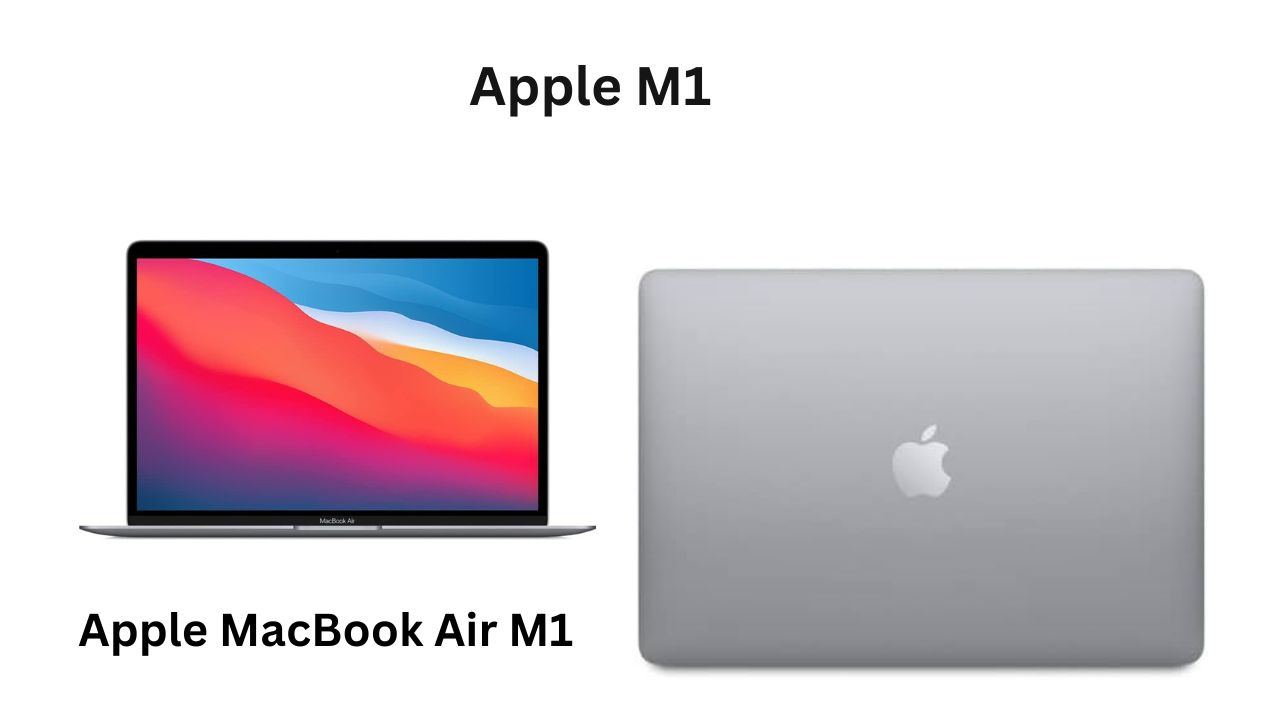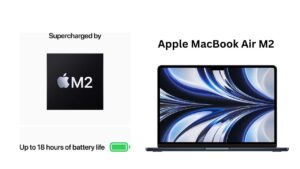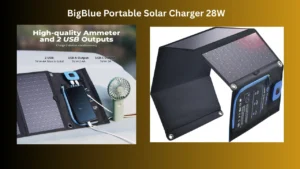Introduction
The Apple MacBook Air M1 arrived in late 2020 as a significant leap forward for Apple’s consumer laptop line. The MacBook Air has long been a popular choice for students, professionals, and casual users who want a lightweight, reliable machine. What made the M1 model particularly noteworthy was Apple’s transition from Intel processors to its own Apple Silicon, the M1 system-on-a-chip (SoC). This review provides an in-depth analysis of the MacBook Air M1’s design, performance, battery life, display, connectivity, software experience, value proposition, and buying considerations for customers in the United States. Where relevant, I note availability on major retail channels, including Amazon.
Overview and Key Features
- Processor: Apple M1 SoC (8-core CPU configuration in most models; some base configurations have 7-core GPU options)
- Graphics: Integrated GPU (7-core or 8-core depending on configuration)
- Memory: 8GB or 16GB unified memory
- Storage: SSD options commonly start at 256GB and go up to 2TB
- Display: 13.3-inch Retina display (2560 x 1600)
- Battery Life: Apple-claimed up to 15–18 hours depending on tasks (wireless web, video playback)
- Weight: Approximately 2.8 pounds (1.29 kg)
- Ports: Two Thunderbolt / USB 4 ports and a 3.5mm headphone jack
- Operating System: macOS (initially Big Sur, upgradable to later macOS releases)
- Availability: Widely sold in the U.S. through Apple Store, authorized retailers, and major online marketplaces—Amazon typically lists the MacBook Air M1 (new and refurbished models).
Design and Build Quality
The MacBook Air M1 retains the slim, wedge-shaped aluminum unibody design that the Air line is known for. The build feels premium and robust while remaining lightweight and portable—an ideal balance for users who travel or commute. The hinge mechanism is solid and the keyboard uses Apple’s Magic Keyboard layout (scissor-switch mechanism), which is comfortable for extended typing sessions. Trackpad responsiveness is excellent, courtesy of Apple’s Force Touch trackpad.
Color options usually include Space Gray, Silver, and Gold. The minimalist aesthetic remains a selling point for many buyers who prefer a sleek, professional look.
Display
The 13.3-inch Retina display is sharp and bright, with a resolution of 2560 x 1600. Color accuracy and contrast are strong for productivity, streaming, and light photo editing. While not as color-critical as the MacBook Pro line, the Air’s display is more than sufficient for most users. The glossy finish and relatively narrow bezels contribute to an immersive visual experience. The True Tone feature automatically adjusts white balance to match ambient lighting, which many users find pleasant for long usage sessions.
Performance
This is the defining strength of the MacBook Air M1.
- CPU Performance: The M1’s 8-core CPU delivers substantial single-threaded and multi-threaded improvements over previous Intel-based MacBook Air models. Everyday tasks—web browsing, document editing, spreadsheets, media consumption—are handled with ease and responsiveness.
- GPU Performance: The integrated GPU (7- or 8-core, depending on configuration) provides significantly better graphics performance than earlier integrated Intel GPUs, enabling smooth video playback, light-to-moderate photo and video editing, and even casual to mid-level gaming at acceptable settings.
- Unified Memory Architecture: The shared memory pool for CPU and GPU reduces latency and improves performance for memory-bound tasks. For most users, 8GB is adequate; power users, developers running VMs, or heavy multimedia editors will benefit from 16GB.
- Thermal Behavior: Notably, the MacBook Air M1 is fanless. This delivers silent operation but can lead to sustained-load thermal throttling under prolonged heavy workloads. For typical day-to-day use and moderate professional tasks, the passive cooling design remains efficient and quiet.
Real-world outcomes: launching apps is fast, multitasking is smooth, and battery-efficient background tasks minimally impact responsiveness. For developers compiling code, the M1 shows significant gains over previous Air models and competes well with many mainstream laptops.
Battery Life
One of the most impressive aspects of the MacBook Air M1 is battery life. Apple’s efficient M1 chip and macOS optimizations lead to excellent endurance. Typical users can expect a full day of mixed productivity—email, web browsing, streaming, and document work—without needing to recharge. For video playback or web browsing, many reports and tests indicate 12–18 hours depending on brightness and workload. This makes the MacBook Air M1 a strong option for travelers, students, and anyone who values long unplugged use.
Audio and Webcam
- Speakers: The built-in stereo speakers produce clear sound with decent bass for a thin laptop. They’re quite usable for media consumption and video calls.
- Microphones: The MacBook Air M1 includes a quality three-microphone array that offers good voice clarity for conferencing.
- Webcam: The 720p FaceTime HD camera is serviceable but not exceptional by modern standards. While image processing on the M1 improves perceived sharpness and dynamic range, those needing superior webcam quality may consider external USB webcams for professional streaming or high-quality video calls.
Connectivity and Ports
The MacBook Air M1 includes:
- Two Thunderbolt / USB 4 ports capable of charging, data transfer, video output, and supporting external storage and displays (with adapter/cable).
- One 3.5mm headphone jack.
The limited port selection reflects Apple’s minimalistic approach and means many users will rely on USB-C hubs or docks to connect legacy peripherals, multiple displays, or Ethernet. Wi‑Fi 6 and Bluetooth 5.0 support provide modern wireless connectivity for faster wireless networking and reliable peripheral connections.
Software Experience
The MacBook Air M1 launched with macOS Big Sur and has since supported subsequent macOS updates. Apple’s control over hardware and software integration yields a smooth and optimized user experience:
- Apps built for Apple Silicon (native M1 apps) run notably faster and more efficiently.
- Rosetta 2 provides a powerful translation layer for Intel-based macOS apps—often with minimal performance penalty and sometimes near-native speeds.
- The macOS ecosystem offers continuity features with iPhone and iPad (Handoff, Universal Clipboard, AirDrop), and integration with iCloud makes syncing straightforward.
Users tied to Windows-only applications should evaluate compatibility or consider virtualization solutions; the M1 architecture introduced limitations for running Windows natively, though virtualization (ARM-based Windows under software like Parallels, where supported) is a possible route.
Who Should Buy the MacBook Air M1?
- Students: Lightweight, long battery life, and solid performance for study, research, and media consumption.
- Professionals on the go: For office work, email, presentations, and general productivity, the MacBook Air M1 is a great choice.
- Content creators (entry-to-mid level): Photo editing and light video editing work well; heavier 4K video workflows may push limits given passive cooling and unified memory constraints.
- Everyday users: Anyone seeking a reliable, fast, and quiet laptop for daily tasks.
Limitations and Considerations
- Port selection: Only two Thunderbolt ports may require dongles or a hub for a fuller setup.
- No active cooling: While great for silent operation, heavy sustained loads can cause throttling compared to MacBook Pro models with active cooling.
- Webcam resolution: 720p is adequate for many, but not ideal for users demanding higher webcam fidelity.
- Memory and storage upgrades: The unified memory and SSD are soldered and not user-upgradable—buying the right configuration up front is important.
- Windows compatibility: Running Windows on M1 is different from Intel Macs; native Boot Camp is not available for x86 Windows, so compatibility for legacy Windows workflows needs consideration.
Value and Pricing (U.S. market)
At launch, the MacBook Air M1 undercut many competitors by offering a compelling combination of performance, battery life, and price. While Apple’s prices can change and promotional deals vary, the M1 Air is often positioned as a mid-range laptop that delivers above its cost in terms of real-world performance gains.
For U.S. buyers, check:

- Apple Store for guaranteed new units and AppleCare options.
- Authorized retailers (Best Buy, B&H) for occasional discounts or education pricing.
- Amazon often lists the Apple MacBook Air M1—both new and certified refurbished models. When shopping on Amazon, verify the seller (Apple or authorized reseller), warranty details, and return policy. Prices can fluctuate; watch for seasonal sales (Back to School, Black Friday, Prime Day) and Apple education discounts if eligible.
Buying Tips for U.S. Customers on Amazon
- Confirm whether the listing is sold by Amazon or an authorized Apple reseller. Some third-party sellers may offer open-box or refurbished units—verify condition and warranty.
- Check warranty and AppleCare eligibility. New machines purchased from third-party sellers should still be eligible for AppleCare, but always confirm with Apple using the serial number after purchase.
- Review return policies and shipping details—Amazon’s return protection is often easier than third-party marketplaces.
- Compare configurations: For general usage, 8GB RAM and 256GB storage tend to be fine. If you expect heavy multitasking, video editing, or large local file libraries, upgrade to 16GB or 512GB+ storage.
- Refurbished units from Apple’s Certified Refurbished store (on Apple’s site or authorized outlets) provide a balance between savings and warranty-backed reliability.
Final Verdict
The Apple MacBook Air M1 represents one of the most compelling value propositions Apple has offered in its laptop lineup. Its introduction marked a turning point in performance-per-watt for mainstream laptops, delivering snappy responsiveness, long battery life, and quiet operation in a thin and light package. For most U.S. consumers—students, professionals, and everyday users—the MacBook Air M1 is an excellent choice that balances capability, portability, and price.
If you require the absolute best sustained performance for heavy pro workloads (long video renders, large-scale compilations, or intensive 3D tasks), a MacBook Pro with active cooling and higher-end M1 Pro/Max chips (or later Apple Silicon) may be a better fit. Otherwise, for portability, battery life, and everyday performance, the MacBook Air M1 is hard to beat.
Availability note: The Apple MacBook Air M1 is commonly available in the U.S. through Apple, major retailers, and online marketplaces such as Amazon. When buying on Amazon, check seller reputation, warranty coverage, and return policies to ensure a secure purchase.
Quick Specs Summary
- Model: Apple MacBook Air M1
- Display: 13.3-inch Retina (2560 x 1600)
- CPU: Apple M1 (8-core)
- GPU: Integrated (7-core or 8-core variations)
- RAM: 8GB / 16GB unified
- Storage: 256GB–2TB SSD
- Ports: 2× Thunderbolt / USB 4, 3.5mm headphone jack
- Weight: ~2.8 lbs
- OS: macOS (upgradeable)
Also read this…
How to Use a Laptop Computer for Beginners: A Step-by-Step Guide




